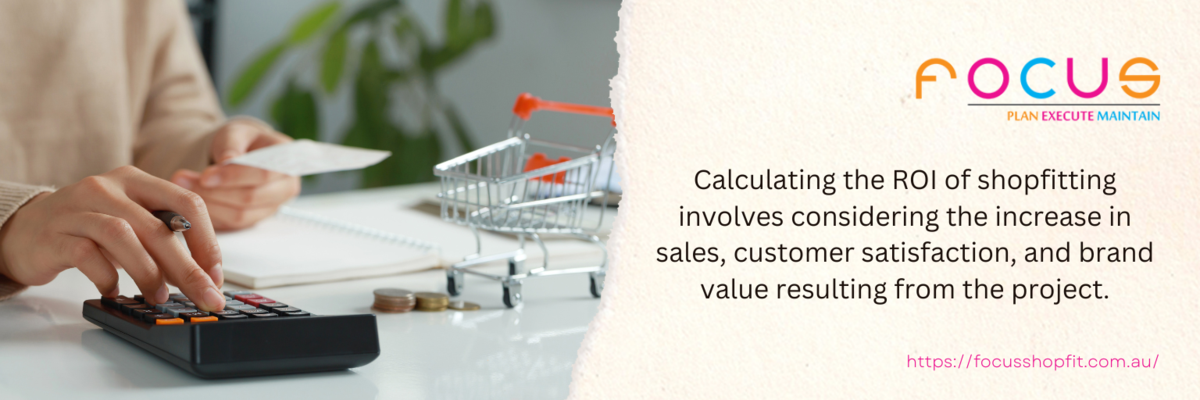Shopfitting plays a crucial role in the success of any retail business in Australia. It involves the design, construction, and installation of fixtures, fittings, and furniture that make a store visually appealing and functional. In a highly competitive market, shopfitting is a way for businesses to create a unique and attractive space that attracts customers and enhances the overall shopping experience. This article delves into the cost of shopfitting in Australia and the return on investment (ROI) considerations for businesses.

Importance of shopfitting for businesses
In the competitive retail landscape of Australia, shopfitting is more than just creating a visually appealing store. It is about creating a unique brand identity, enhancing customer experience, and maximizing sales potential. A thoughtfully designed shopfitting can create a lasting impression on customers, differentiate a business from its competitors, and drive customer loyalty. It is an investment that can lead to increased footfall, higher conversion rates, and ultimately, higher profits.
Shopfitting also plays a crucial role in creating a seamless and efficient store layout. A well-designed store layout can enhance customer flow, improve product visibility, and optimize the use of available space. This, in turn, can lead to increased sales and improved operational efficiency.
Factors Affecting Shopfitting Costs in Australia
The cost of shopfitting in Australia can vary significantly depending on several factors. Some of the key factors that influence the overall cost include:
Size and complexity of the store:
The size and complexity of the store are major determinants of the shopfitting cost. Larger stores require more materials and labor, which can drive up the overall cost. Similarly, stores with intricate designs or unique requirements may require specialized expertise, resulting in higher costs.
Quality of materials and finishes:
The choice of materials and finishes used in shopfitting can greatly impact the cost. Premium materials and finishes tend to be more expensive but can also create a more luxurious and high-end look. On the other hand, cost-effective materials can help keep the budget in check without compromising on functionality and aesthetics.
Customization and branding requirements:
If a business requires custom fixtures, fittings, or branding elements, the cost of shopfitting may increase. Customization often involves additional design and manufacturing processes, which can add to the overall cost. However, it also allows businesses to create a unique and cohesive brand image that resonates with their target audience.
Location:
The location of the store can also affect the cost of shopfitting. Certain areas may have higher labor costs or specific regulatory requirements that need to be considered during the shopfitting process. It is essential to factor in these location-specific considerations when budgeting for shopfitting.
Shopfitting costs in Australia: getting accurate estimates
Businesses should consult with professional shopfitting companies to get accurate cost estimates based on their unique needs and specifications. A reliable shopfitting company will provide a detailed breakdown of costs, helping businesses make informed decisions and avoid unexpected budget overruns.
Calculating the return on investment (ROI) of shopfitting
While shopfitting is an investment for businesses, it is essential to evaluate the return on investment (ROI) to determine its effectiveness. Calculating the ROI of shopfitting involves considering the increase in sales, customer satisfaction, and brand value resulting from the project.
To calculate the ROI, businesses can compare the pre-shopfitting and post-shopfitting sales figures, taking into account any increase in revenue. Additionally, customer feedback and satisfaction surveys can provide valuable insights into the impact of shopfitting on customer experience. Businesses can also assess the brand value and recognition generated through the shopfitting project.
By analyzing these factors, businesses can determine the overall impact of shopfitting on their bottom line and make informed decisions about future investments in improving stores.

Tips for maximizing profits through effective shopfitting
To maximize profits through effective shopfitting, businesses can consider the following tips:
Understand your target audience:
Before embarking on a shopfitting project, it is crucial to have a deep understanding of the target audience. This will help in creating a store environment that resonates with their preferences and expectations.
Focus on functionality:
While aesthetics are important, ensuring the store layout and fixtures are functional is equally crucial. A well-designed store layout can enhance customer flow, improve product visibility, and optimize space utilization.
Incorporate branding elements:
Integrating branding elements into the shopfitting design can create a cohesive brand image and reinforce brand identity. Consistent branding throughout the store can help in building brand recognition and customer loyalty.
Embrace technology:
Leveraging technology in shopfitting can enhance the overall customer experience. Interactive displays, digital signage, and virtual reality elements can engage customers and create a memorable shopping experience.
Regular maintenance and updates:
To ensure the shopfitting remains effective in the long run, regular maintenance and updates are essential. This includes keeping the store clean, fixing any damages, and refreshing the store design periodically to stay relevant and appealing to customers.
Choosing the right shopfitting company in Australia
Selecting the right shopfitting company is crucial for a successful project. When choosing a shopfitting company in Australia, businesses should consider the following factors:
Experience and expertise:
Look for a shopfitting company with a proven track record and extensive experience in the industry. An experienced company will have the knowledge and skills to handle complex projects and deliver high-quality results.
Portfolio:
Review the company’s portfolio and ask feedback from previous clients. This will give businesses an idea of the company’s capabilities and the satisfaction level of their past clients.
Customization capabilities:
If businesses have specific customization requirements, ensure that the shopfitting company can deliver tailored solutions. Discuss the customization options and assess the company’s ability to meet unique project needs.
Budget and timeline:
Discuss the budget and timeline requirements with the shopfitting company upfront. A reliable company will provide a detailed cost breakdown and a realistic timeline for the project.
Communication and collaboration:
Effective communication and collaboration are essential for a successful shopfitting project. Choose a shopfitting company that values open communication and is willing to work closely with the business to achieve the desired outcomes.

Investing in shopfitting for long-term success
Shopfitting is a critical investment for businesses in Australia. It not only enhances the visual appeal of a store but also creates a unique brand identity and improves the overall customer experience. While the cost of shopfitting can vary depending on various factors, businesses can expect a significant return on investment through increased sales, customer satisfaction, and brand recognition. By following the tips mentioned in this article and choosing the right shopfitting company, businesses can maximize the profits generated from effective shopfitting projects.
